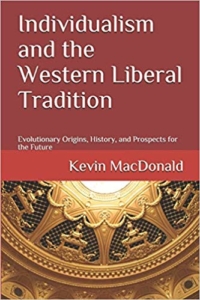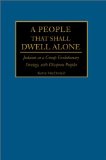Dovid Katz’s article in The Guardian “Halting Holocaust Obfuscation” is yet another example of Jewish intellectual activists with access to the media attempting to control historical memory in a way that highlights Jewish suffering and presents Jewish behavior as nothing more than innocent victimhood. Katz is determined to disallow any equivalence between the horrors inflicted on the populations of Eastern Europe by the Germans and by the Soviets. He condemns Polish MEP Michal Kaminski, linking to this article, for bringing up Jewish behavior in the Jedwabne incident in which Jews were murdered during the German occupation of Poland during WWII:
One of the participants in the 2001 meeting, Maria Mazurczyk, told us: “I think that Mr Kaminski, like us, wanted everything to be revealed: the times before the war when things were good – and the time of the Soviet occupation when the Jews didn’t respect their Polish neighbours – and later the effect of all this.”
At the time Kaminski condemned Poles who’d killed Jews – though he suggested the massacre was principally carried out by Germans. But it appears his principal concern was with alleged Jewish guilt. Anna Bikont of the liberal Polish daily Gazeta Wyborcza, who spent much time in Jedwabne in 2001 while researching a book, says: “Mr Kaminski came to the place where an incredible crime was committed – and he told not about the women, children, old people who died in this horrible manner, but he told about Jews who collaborated with Soviets and who killed Poles.”
Would a British politician who’d behaved in a similar way survive in the mainstream of British politics?
Probably not. But that’s only because mentioning Jewish behavior as contributing in even the slightest way to anti-Jewish attitudes is off limits, even if they collaborated with the Soviets against the Poles or against the Baltic peoples. The following is from a review of Alexandr Solzhenitsyn’s 200 Years Together (italicized quotes are translations of Solzhenitsyn):
“Everyone was listening intently to determine if the Germans were already on the way.”
In June and July of 1941 those living in the regions of eastern Poland occupied by the Red Army – Polish farmers, the bourgeoisie, the clergy, ex-soldiers, and intellectuals – all awaited the invasion of German troops. This quote is from the Polish Jewish historian J. Gross, author of the book Neighbors: The Murder of the Jews of Jedwabne.Solzhenitsyn explains why Poles, Lithuanians, Latvians, Ukrainians, Estonians, Belorussians, Bukowina-, and Moldava-Romanians could hardly wait for the Germans to invade.
Pursuant to his central thesis, Solzhenitsyn writes that without the high Jewish presence among the leaders and executioners of the Bolshevik dictatorship, Lenin’s newly born Soviet state would have been at an end, at the latest, by the time of the Kronstadt Sailors Rebellion in 1921. Solzhenitsyn examines specific decisive questions, as for example: Why, in the period 1939-41, did such a large percentage of Jewry in eastern Poland, Galicia, and in the Baltic States collaborate with the Red Army, Stalin’s secret police, and Bolshevism in general? And why did the pogroms in these regions take place under the slogan “Revenge for the Soviet Occupation”? Solzhenitsyn:
“In eastern Poland, which had been incorporated in the Soviet Union in September 1939, the Jews, especially the younger generation, welcomed the invading Red Army with frenetic jubilation. Whether in Poland, Bessarabia, Lithuania, or Bukowina, the Jews were the main support of Soviet power. The newspapers report that the Jews are enthusiastically supporting the establishment of Communist rule.” (p. 329)
In that fateful year a Polish Jew who had emigrated to France prophesized that the non-Jews who had been subjugated to Bolshevism would one day exact a fearful war of vengeance. In 1939 Stanislav Ivanowich, a left socialist sympathetic to the Soviet Union, warned:
“Should the dictatorship of the Bolsheviks end one day, the collapse will be accompanied by the atavistic, barbaric passions of Jew hate and violence. The collapse of Soviet power would be a terrible catastrophe for Jewry; today Soviet rule equates to Judeophilia.” (p. 310)
See here for a comment on the distortions of Jan Gross’s Neighbors which attempts to blame the massacre solely on the irrational anti-Semitism of Poles. This compilation notes, among other things, that “There was significant collaboration on the part of some Jedwabne Jews with the Soviet invaders from 1939 to June 1941; the victims were primarily the town’s Polish population, several hundred of whom were deported to the Gulag.”
When a significant percentage of people from an alien ethnic group support an invader and collaborate in the deportation of people from one’s own ethnic group, it is not at all surprising that there would be reprisals when there is a shift of power; nor would be be surprising if the reprisals were directed all Jews, not just the ones known to collaborate or sympathize. That’s how our evolved psychology of ethnic competition works.
I notice in my notes that Checinski (1982, 9) writes that “even then [in 1943] there was an attempt to rationalize this blind hatred [of Jews] by recalling the ‘improper’ attitude of the Jewish population in eastern Poland towards the Bolsheviks in September 1939 when the Soviet army, in connivance with the Nazis, occupied their territories.” Checinski also notes that immediately after WWII Jews welcomed the Soviet army and the new regime “with favor if not with outright enthusiasm” and that “the small Jewish community was seen by friends and foes alike as one of the mainstays of the Soviet sponsored regime. This only further alienated it from the great majority of the Polish population” (p. 8). This comment is highly compatible with Jaff Schatz’s (1991) treatment which I discuss extensively in Ch. 3 of Culture of Critique. It is interesting that American Jewish representatives visiting Poland after the war presented the new Polish regime as “a paragon of liberalism and tolerance, unequaled in Eastern Europe” (Checinski, p. 11).
To conclude, anti-Jewish attitudes in Eastern Europe had a basis in the real behavior of Jews. No doubt the events of 1939 and thereafter were influenced by traditional grievances between Poles and Jews, but actual Jewish behavior during this period is also relevant. Jews were correctly perceived as more welcoming to the Soviets after the 1939 invasion and as more loyal to the Communist regime and as willing executioners of the remnants of Polish nationalism after 1945. (As I and others have noted, the common denominator of the behavior of Diaspora Jews in European countries has been to oppose nationalist movements; further, during this period, Jews throughout Europe and in America saw communism as good for the Jews at least partly because Jews had become an elite in the USSR and the USSR had outlawed anti-Semitism.)
The situation was exacerbated by the fact that Jews were also highly placed in the government and in the security forces. Under these circumstances, social identity theory predicts that Poles would develop the well-attested stereotype of “zydokomuna” (Judeo-Communism) and exaggerate the differences between themselves and all Jews in Poland. It simply reflects typical ethnic conflict that has gone on throughout the ages — nothing more than a reflection of our evolved psychology.
In the West, Jewish activists have had a relatively easy time erecting the image of innocent Jews and evil Nazis as a complete explanation of the events of World War II. This message is much more difficult in Eastern Europe where there is a collective memory of collaboration of Jews with the horrors of communism and in the extermination of nationalist elements of the non-Jewish population.





